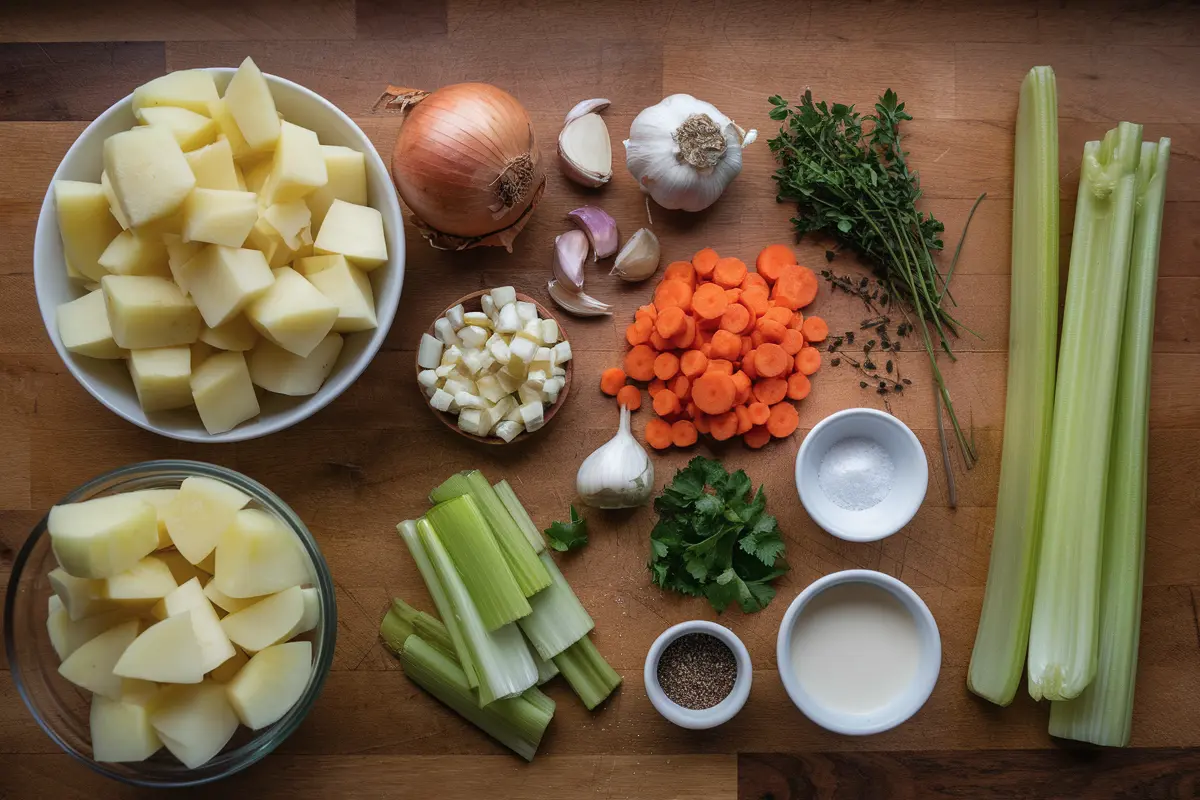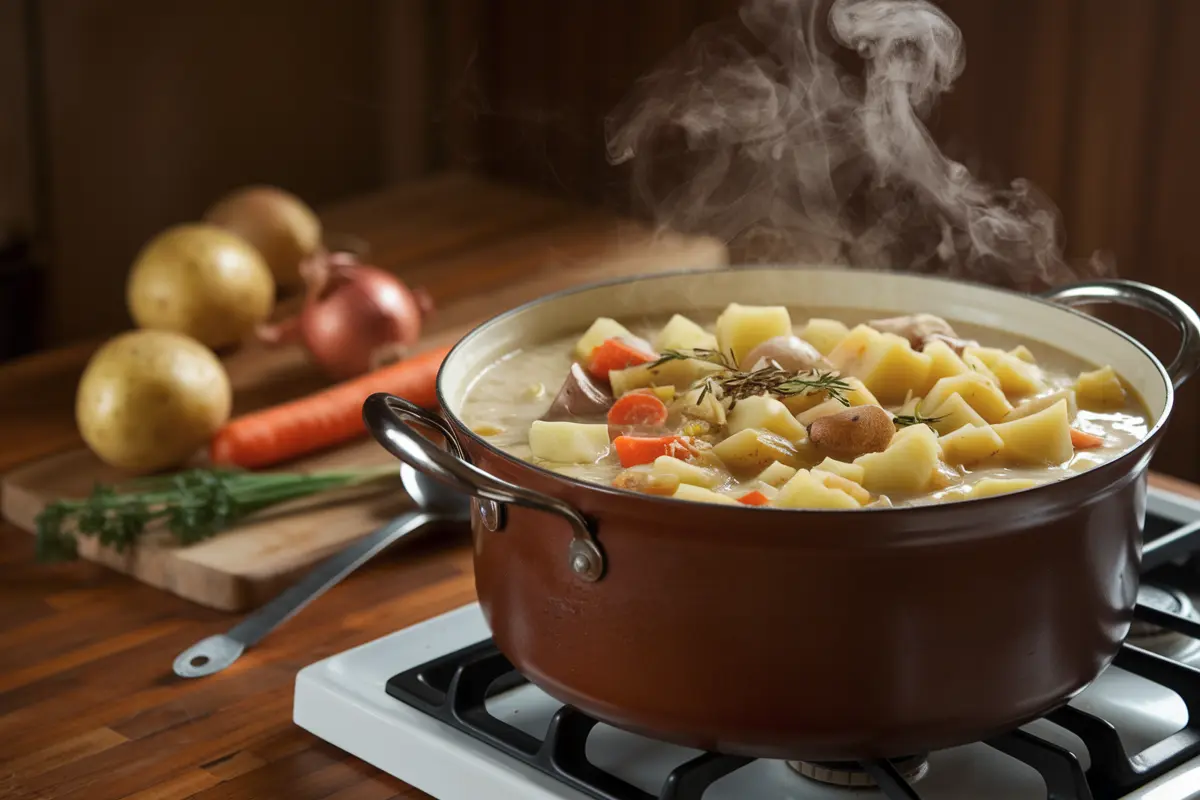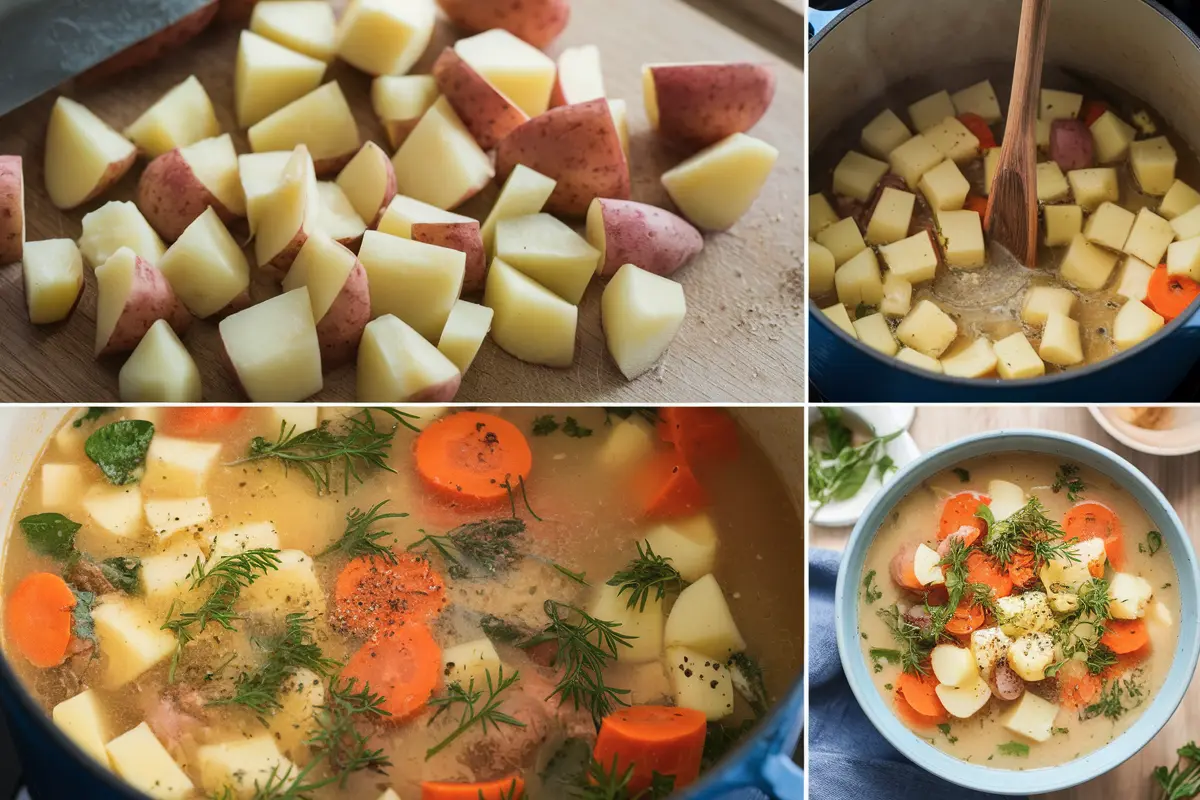Adding potatoes to soup is a fundamental step in many recipes, but the question of whether to cook potatoes before adding them to soup often puzzles both novice and seasoned cooks. The decision can significantly impact the texture, flavor, and overall success of the dish. In this comprehensive guide, we’ll explore the pros and cons of cooking potatoes before adding them to soup, the different methods available, and how to choose the best type of potato for your recipe.
Why Are Potatoes Added to Soup?
Potatoes are a versatile ingredient that can add texture, flavor, and nutrition to your soup. They are rich in vitamins, minerals, and fiber, making them a healthy addition to your meal. Here’s why you might consider adding potatoes to your soup:
- Texture and Consistency: Potatoes can help thicken the soup, providing a heartier consistency. This is particularly useful in creamy soups where a smooth, velvety texture is desired.
- Flavor Absorption: Potatoes absorb the flavors of the broth, herbs, and other ingredients, enhancing the overall taste of the soup.
- Nutritional Value: Potatoes are a good source of vitamin C, potassium, and complex carbohydrates, which provide energy and essential nutrients.
Should You Cook Potatoes Before Adding Them to Soup?
The decision to cook potatoes before adding them to soup depends on several factors, including the type of soup, the desired texture, and the cooking time available. Here are some options and considerations to guide you:
1. Cooking Potatoes Directly in the Soup
Cooking potatoes directly in the soup is a popular method because it allows the potatoes to absorb the flavors of the broth and other ingredients. This method is best suited for soups where a thickened texture is desired, such as potato leek soup or clam chowder. Here’s how it works:
- Flavor Enhancement: By cooking the potatoes directly in the soup, they soak up the surrounding flavors, making each bite more flavorful.
- Thickening Effect: As the potatoes cook, they release starch, which helps to naturally thicken the soup. This is especially beneficial if you’re aiming for a creamy consistency.
- Time Considerations: Potatoes generally take about 20-30 minutes to cook in a simmering soup, depending on their size and variety.
2. Pre-Cooking Potatoes Before Adding to Soup

Pre-cooking potatoes can be a time-saving option and provides greater control over the texture of the potatoes in the finished soup. This method is particularly useful in brothy soups where distinct potato pieces are desired. Common pre-cooking methods include:
- Parboiling: Partially cooking the potatoes in salted water before adding them to the soup ensures they remain firm and don’t overcook during the soup’s simmering process.
- Roasting: Roasting adds a deeper flavor to the potatoes and can create a slightly crispy texture that contrasts nicely with the softness of the soup.
- Steaming: Steaming potatoes before adding them to the soup helps preserve their nutritional value and results in a firmer texture compared to boiling.
When to Add Potatoes to Soup for Optimal Results
The timing of adding potatoes to soup can significantly impact the dish’s texture and overall quality. Here’s a breakdown of when to add potatoes based on your desired outcome:
1. For Thickening the Soup
If your goal is to use potatoes as a thickening agent, add them at the beginning of the cooking process. As they cook, the potatoes will break down, releasing starch into the soup and creating a thicker, creamier texture. This method works well for soups like potato soup, clam chowder, or corn chowder.
2. For Maintaining Potato Chunks
If you prefer to have visible, intact chunks of potatoes in your soup, add them towards the end of the cooking process—about 20-30 minutes before the soup is done. This will allow the potatoes to cook through without disintegrating. This approach is ideal for soups where you want the potatoes to stand out, such as vegetable soup or chicken potato soup.
3. Size and Cut Matter
The size and shape of the potato pieces can also influence the cooking time and texture. Smaller cubes cook faster and are more likely to break down, while larger chunks take longer to cook but are more likely to retain their shape. For even cooking, try to cut your potatoes into uniform sizes.
Preparing Potatoes for Soup: Tips and Techniques
Proper preparation is key to achieving the best results when adding potatoes to soup. Here are some tips to help you get it right:
1. Washing and Peeling
Potatoes should be washed thoroughly to remove any dirt or debris. Whether to peel them depends on your personal preference and the type of soup you are making. Leaving the skin on can add a rustic texture and additional nutrients, while peeling results in a smoother texture.
2. Cutting for Even Cooking
Cutting potatoes into uniform pieces ensures they cook evenly. Aim for 1-inch cubes for most soups, which provide a good balance between cooking time and maintaining texture. For best results, use a sharp knife and a steady hand to create consistent pieces.
3. Enhancing Flavor with Broth or Seasoned Water
When pre-cooking potatoes, consider boiling them in broth or seasoned water instead of plain water. This step infuses the potatoes with additional flavor, enhancing their contribution to the soup. Adding herbs, garlic, or a splash of vinegar to the boiling water can also elevate the flavor profile of the potatoes.
Best Potatoes for Soup: Choosing the Right Variety
Not all potatoes are created equal, and choosing the right type can make a significant difference in your soup. Here’s a guide to help you select the best potatoes for your soup:
1. Starchy Potatoes (Russets)
Russet potatoes are high in starch and have a dry, fluffy texture that works well for thickening soups. They break down easily when cooked, making them ideal for creamy soups. However, they may not hold their shape well, so they are best suited for soups where a smooth texture is desired.
2. Waxy Potatoes (Red and Yukon Gold)
Waxy potatoes like Red or Yukon Gold have a lower starch content and a firmer texture, which helps them hold their shape during cooking. These potatoes are perfect for soups where you want distinct pieces, such as in chowders or brothy soups.
3. All-Purpose Potatoes (Yukon Gold)
Yukon Gold potatoes are a versatile choice, combining some of the best qualities of both starchy and waxy varieties. They have a medium starch content and a buttery flavor, making them suitable for almost any type of soup.
For more information on selecting the right potato for your soup, you can explore Potato Goodness, where they detail the characteristics of different potato types and their best uses.
Additional Tips for Cooking Potatoes in Soup
Here are some additional tips and tricks to help you master the art of cooking potatoes in soup:
- Monitor Cooking Time: Overcooking potatoes can cause them to disintegrate into the soup, which may not be desirable if you prefer chunkier pieces. Keep a close eye on the potatoes as they cook and test them with a fork for doneness.
- Avoid Overcrowding the Pot: When adding potatoes, ensure there is enough space in the pot for them to cook evenly. Overcrowding can lead to uneven cooking and mushy textures.
- Use Low to Medium Heat: Cooking potatoes over high heat can cause them to break down too quickly. Instead, simmer the soup over low to medium heat to allow the potatoes to cook gently and evenly.
- Adjust Seasonings: Potatoes tend to absorb salt and other seasonings as they cook. Taste the soup as it cooks and adjust the seasoning as needed to maintain balanced flavors.
Common FAQs About Cooking Potatoes in Soup
Here are some frequently asked questions about adding potatoes to soup, along with detailed answers:
1. Can I add raw potatoes directly to the soup?
Yes, adding raw potatoes directly to the soup is a common method. This allows the potatoes to absorb the flavors of the broth and other ingredients, enhancing the overall taste of the soup. It’s a convenient option, especially for thicker soups where the potatoes can also act as a natural thickener.
2. How long do potatoes take to cook in soup?
Potatoes generally take about 20-30 minutes to cook in a simmering soup. The exact time depends on the size and variety of the potatoes. To check for doneness, pierce a piece with a fork; if it slides through easily, the potatoes are ready.
3. What type of potatoes work best in soup?
The best type of potato depends on your desired outcome. For thickening, starchy potatoes like Russets are ideal because they break down easily, releasing starch that thickens the soup. For soups where you want to maintain chunks of potato, waxy varieties like Red or Yukon Gold are more suitable because they hold their shape well during cooking. 4. Do I need to peel potatoes before adding them to soup?
Peeling potatoes before adding them to soup depends on personal preference and the desired texture of the soup. Leaving the skins on can add a rustic feel and extra nutrients, like fiber and vitamins. However, some people prefer a smoother texture without the skins, especially in creamy soups.
Final Thoughts
Adding potatoes to soup can elevate the dish by enhancing texture, flavor, and nutritional value. Whether you choose to cook them beforehand or directly in the soup depends on the specific needs of your recipe. By understanding the properties of different potato varieties and the impact of timing, you can make more informed choices that result in delicious, satisfying soups.
Experimenting with different methods and potato types can lead to discovering your perfect soup recipe. The key is to consider the desired outcome for your soup, whether it’s a creamy texture, a hearty bite, or a perfectly thickened consistency. With these guidelines, you’ll be well-equipped to make soups that are not only tasty but also visually appealing and nutritionally balanced.
By following these tips and using the right techniques, you’ll be able to craft soups that satisfy both the palate and the eyes, making every bowl a comforting experience. Enjoy experimenting in the kitchen, and remember: the best recipes often come from a blend of tradition and personal touch.
Deciding whether to cook potatoes before adding them to soup can significantly impact your dish’s texture and flavor. By understanding the types of potatoes, their cooking methods, and when to add them to your soup, you can tailor your approach to create the perfect bowl every time. If you’re making a creamy potato soup, you might want to explore further details on potato soup recipes to find a method that suits your needs.
For soups where maintaining texture is key, knowing what potatoes contain and how to incorporate them properly is crucial. For more insights, check out what potato soup contains. If your soup lacks the desired thickness, understanding what thickens potato soup can help you adjust your recipe effectively.
And if you’ve ever found your soup lacking in flavor, consider reviewing common mistakes and how to fix them by exploring why your soup may have no flavor. With these resources and the tips shared in this article, you’ll be well-equipped to make potato soups that are flavorful, satisfying, and perfectly tailored to your preferences.


